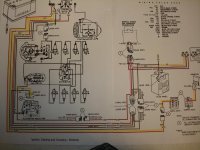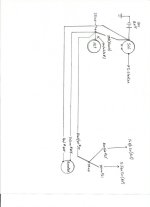franklinair
Well-known member
- Joined
- Mar 1, 2007
- Messages
- 4,744
I feel like I'm flogging a dead horse:
The ammeter reads continuity with an Ohm meter, barely deflecting the needle. (about the needle width)
The 2 wire circuit, one lead to the + post on the solenoid, one lead going to the Alternator reads 1.25 Ohms.
With power on (Battery only) I turned on the headlights expecting to see the Ammeter needle deflect negative. Nada, barely discernable.
I hate having to resign myself to having a non functional Ammeter.
Neil
The ammeter reads continuity with an Ohm meter, barely deflecting the needle. (about the needle width)
The 2 wire circuit, one lead to the + post on the solenoid, one lead going to the Alternator reads 1.25 Ohms.
With power on (Battery only) I turned on the headlights expecting to see the Ammeter needle deflect negative. Nada, barely discernable.
I hate having to resign myself to having a non functional Ammeter.
Neil


